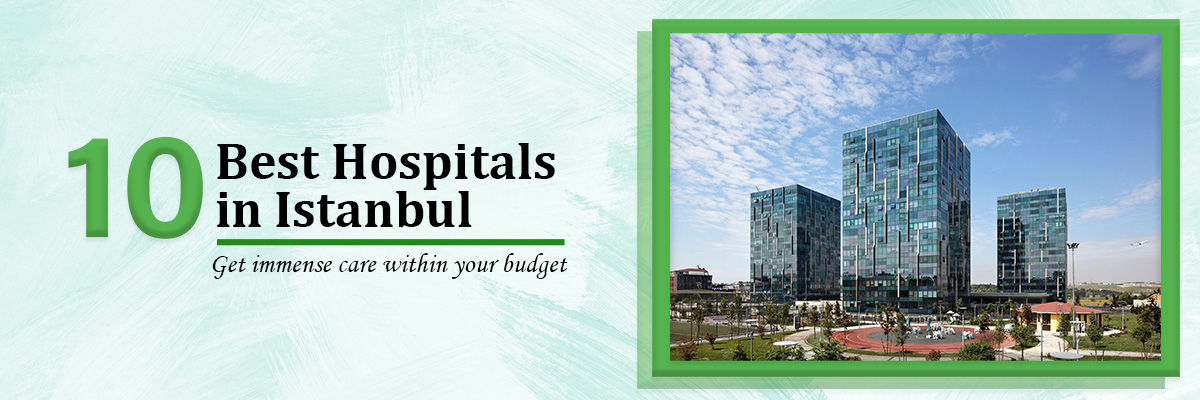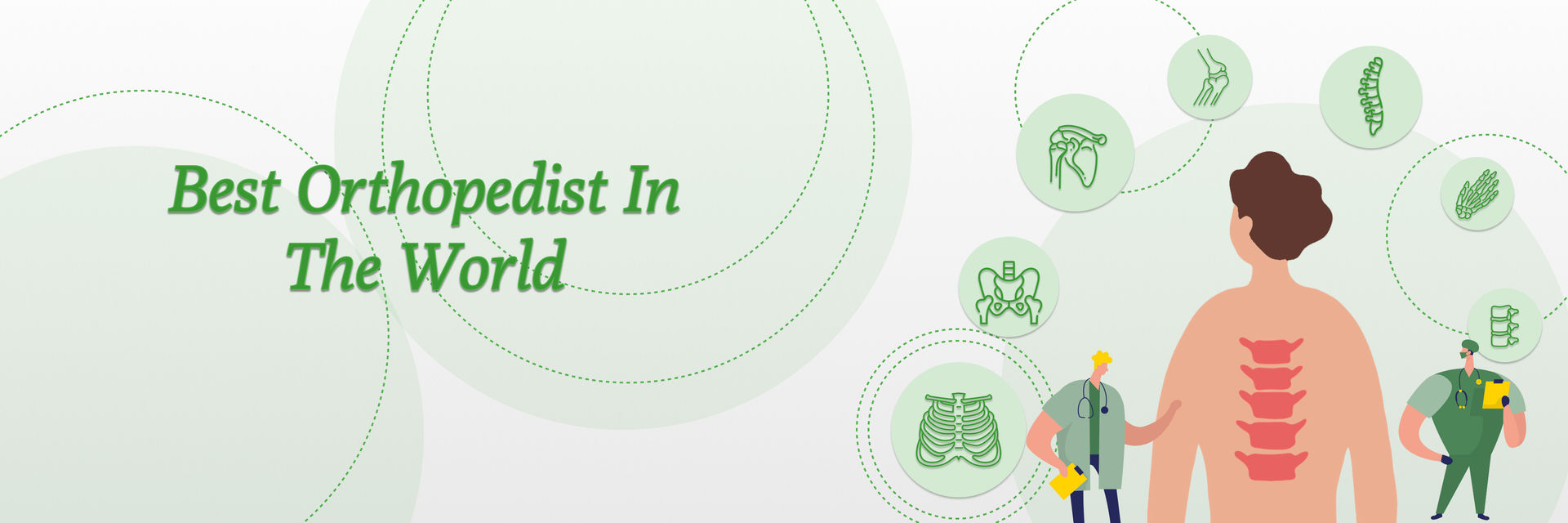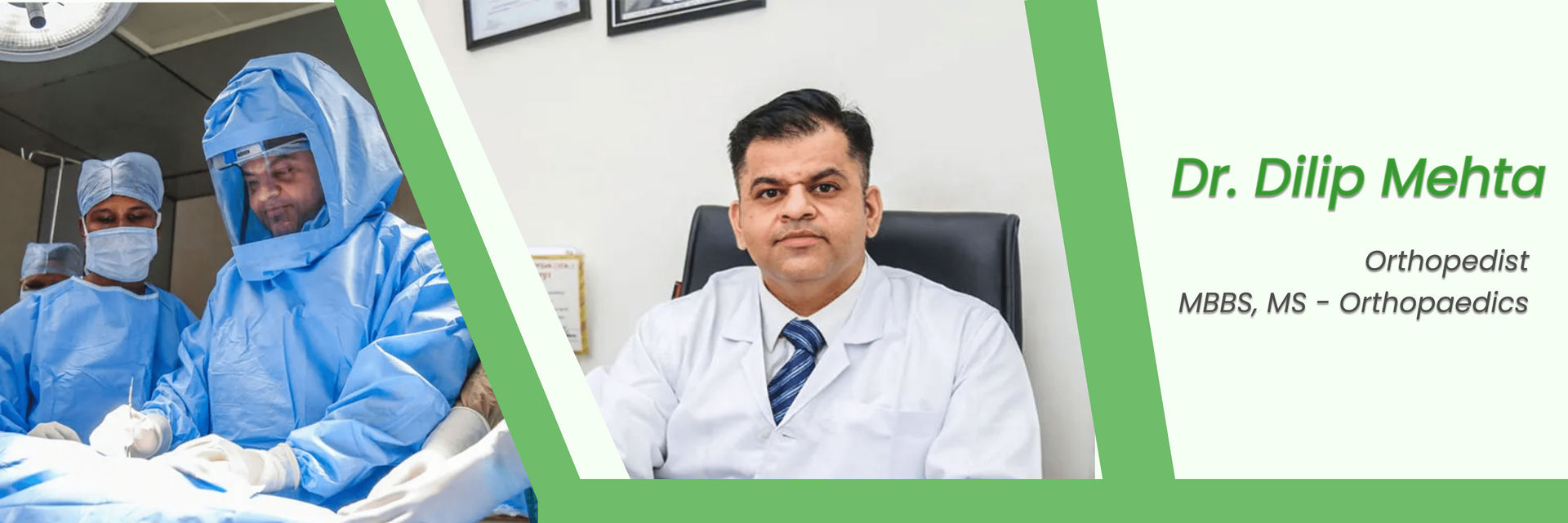Why Knee Pain?
Knee pain is a very common medical condition. The pain ranges from minor pain to an unbearable pain capable of making a person immobile. Knees are under constant pressure throughout the day.
Knees go through wear and tear when one engages in various physical activities. It generally occurs due to age or may occur if one suffers from a knee injury or medical conditions.

A healthy knee will have padding inside with cartilage which is a rubbery tissue that provides a cushioning effect. It also contains a small amount of fluid. When the cartilage wears away the bones are rubbing together without that cushion. This can cause the joints to become inflamed which results in pain and stiffness.
There are many reputed ayurvedic hospitals in India that provide excellent treatments and therapies if you wish to experience the power of Ayurveda in curing the mind and body.
Different Types of Knee Pain
Do you suffer from knee pain? Then it is important to pinpoint exactly where the pain is, so you can find relief. Knee pain diagnosis involves some detective work. You could have mechanical knee problems or inflammatory knee problems. Three most common types of knee problems are name as:
Iliotibial Band Syndrom
If the pain is on the outside of your knee and runs up to your hip you may Iliotibial Band Syndrome or ITB. The Iliotibial Band is a fibrous band that extends from the hip to the knee. It causes pain on the outside of the knee and may gradually move up the side of the thigh. You may feel a snapping sensation when you straighten your bent knee. Usually, there's not a lot of swelling and your range of motion in the knee joint should be normal.
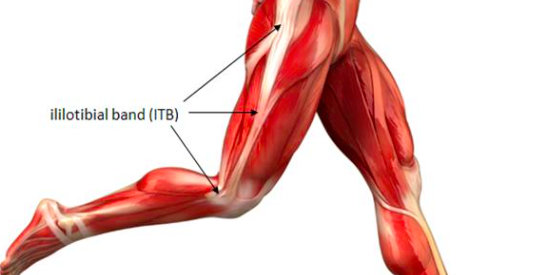
IT band problems occur by having high or low arches, having an uneven leg length, bowed legs or weak thigh muscles, supination where the feet turn outward and can cause friction and inflammation to the IT band. Wearing shoes that may have worn down too much, running on uneven pavement or down hills, or a change in your normal workout routine.
Runners Knee
If the pain is dull and around or under your kneecap you could have runner's knee. Runner's knee also called Chondromalacia or Patella Femoral Stress Syndrome. Vigorous activities may cause excessive stress and wear on the cartilage of the kneecap. This can lead to inflammation and erosion, which can cause the cartilage to break down making it difficult to move your knee.
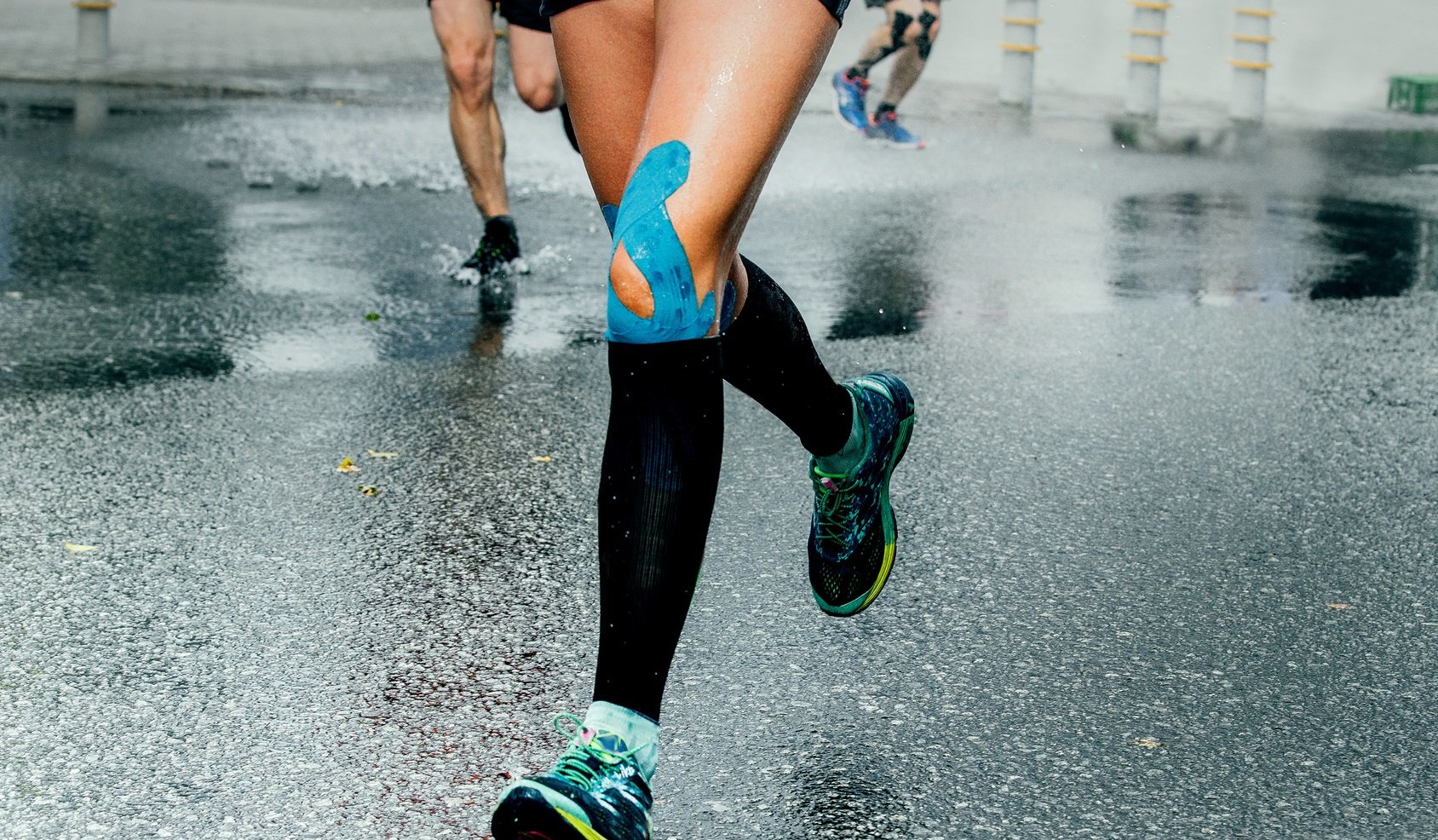
This condition appears mostly in runners, but it can also affect those who engage in activities that need a lot of bending of the knees like biking, jumping, even walking. Some of the factors that may contribute to runner's knee are flat feet tight or weak thigh muscles. Muscle imbalance inadequate stretching misalignment, overuse, or injury are also some factors.
Arthritis of Knee
The most common one is Arthritis of the Knee. Do you feel pain and weakness daily around your knee?
If so then you may have an arthritic knee. Which develops after years of strain to the ligaments and tendons that support the kneecap. Pain swelling and stiffness in joints are the most common complaint when it comes to arthritis. Pain and swelling may be in fingers, knee joints, and spine, etc.
The most common forms of arthritis are rheumatoid arthritis, osteoarthritis, alkalizing arthritis, and spondylitis. Sometimes one joint gets affected or more joints may get affected, sometimes joint inflammation and pain may be a symptom of other diseases also like SLE like systemic lupus erythematous.
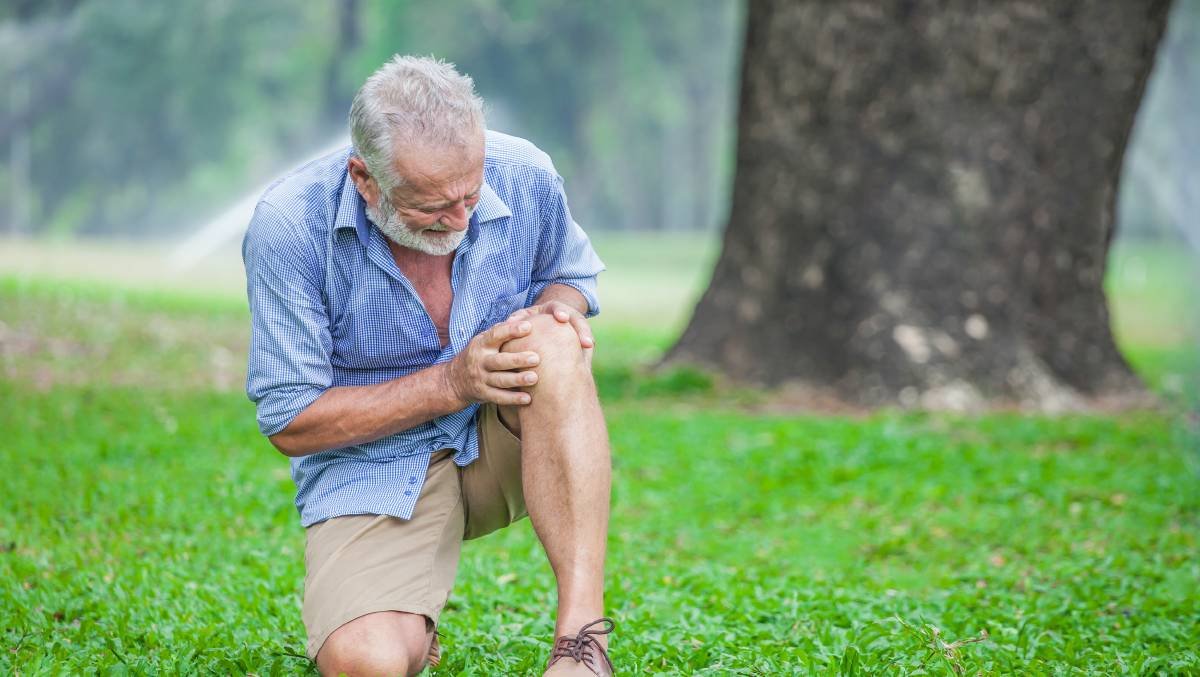
Arthritic knees can develop from daily activities that put pressure on the kneecap such as kneeling, squatting, or climbing stairs. Weight gain also places stress on the knee. Here are a few symptoms that may indicate you have an arthritic knee:
- If your pain and swelling tend to be worse in the morning or after a period of inactivity.
- If you hear a cracking sound when you move, increased knee pain as the weather changes.
Conventional Treatment for Knee Pain
There are several methods of treatment which is dependent on several factors like severity, age, health condition, cost, etc. There are medicinal treatments adopted by Orthopedist usually for inflammatory issues. There are also wearable instrument treatments that can be accompanied along with physiotherapy. If the pain is severe then the doctors may suggest for a knee replacement surgery. In order to diagnose the problem the doctor suggest many tests like Arthrography, Bone densitometry, Bone scan, CT Scan etc, Which must be done with the best facilities and expertise from a Knee replacement Surgeon for a better result.
Ayurvedic Treatments for Knee Pain
The Ancient Ayurvedic texts correspond knee pain to Sandika Vatha that is osteoarthritis and Aama Vatha that is rheumatoid arthritis. In Ayurveda the treatment is not for the disease, it is for the person. Each individual or a person is unique so is their body constitution and the treatment is tailored according to that person.
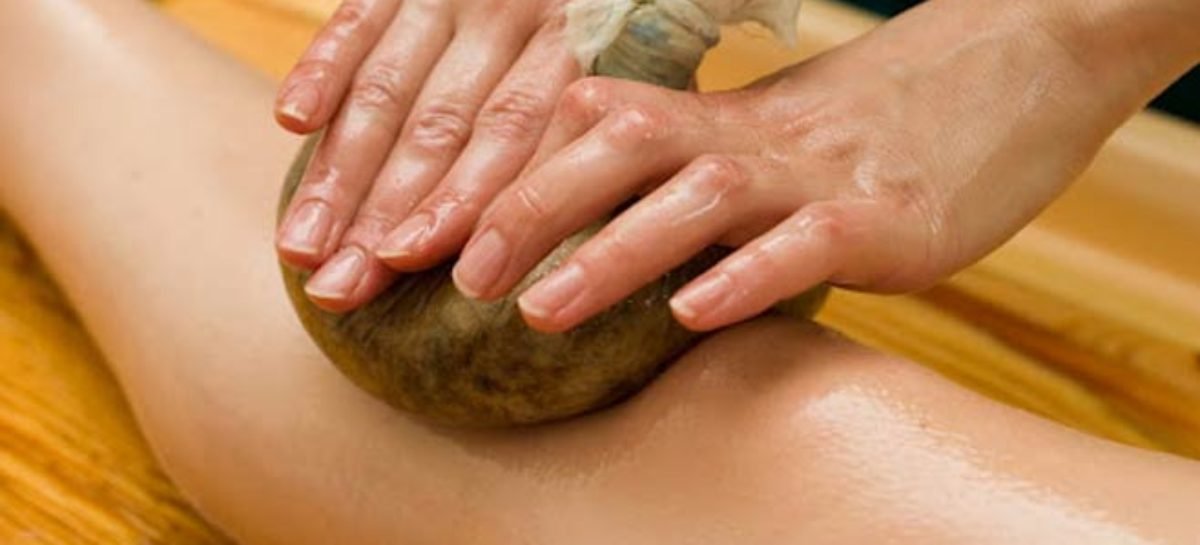
In Ayurveda, the root cause of diseases is the imbalance or loss of equilibrium of the three doshas namely Vatta, Pitta and Kapha. Treatment starts from the process of digestion itself. When there is a weak digestive power, there will be an accumulation of the toxins i.e. Aama. Instead of the useful nutrient tissues which have to be accumulated in the body.
This Aama or toxins gets accumulated in the gut and in turn, Vatta gets accumulated in the colon. In short, toxins accumulation and immune dysfunction may be the causes of pain to start. So, the immediate treatment will be of removing the toxins and strengthening the Agni. i.e. the digestive power, which is the basic treatment or pretreatment procedure in Ayurveda. Through this treatment, the body is regulated to come back to its equilibrium state.
Ayurvedic Classification of Knee Pain
In Ayurvedic Knee pain treatment, the knee conditions are considered as two:
Inflammatory (Ama accumulation) – This is mainly due to toxin accumulation and is considered as the initial stage of knee pain. It is treated with the purification of the body and the equilibrium of body is restored.
In Ayurveda, the detoxification is a three-level process which again depends upon the severity of the disease. For lighter detoxification, Ayurvedic diets and few herbal medicines would be enough. For higher degree detoxification Ayurveda insists Panchakarma (A complete body detoxification process).
There are many herbs and oils recommended in Ayurveda Texts which helps in detoxification such as Guggulu, Eranda Sneha, Narayana Tail, and Nirgundipatra to name a few of them.
According to Ayurvedic Texts, there are numerous therapies or processes which can be performed with the focus to knee pain. Such as Abhyanga, Ilakkaizhi, Vasthi, Dhanyamladhara, Podikkizhi, Janu Basti and many more. These can be suggested as per the condition and severity of the knee pain.
Degenerative (Vata aggravation) – This is a relatively severe condition. It goes one level above the inflammatory condition hence it is known as the degenerative change, if not treated properly and on time.
This condition occurs normally in older age as the body starts losing the regenerative ability or the capacity of the nutrient cells is reduced in the body. It can be due to various reasons.
Ayurvedic Texts have prescribed a lot of medicinal mixes that help in improving the regeneration of nutrient cells and strengthens the joints. There are a lot of treatment methods or procedures also for the same as Ksheera vasthi, Tailadhara and Nhavarakkizhi etc. These are also the Ayurvedic treatments for cartilage regeneration.
The common forms of treatment in Ayurveda for Knee pain is of two-stage. First is called Shodana treatment that is the purification treatment. Then, Shaman which contains the internal medicines to maintain the metabolism. Here, the lifestyle and the condition of the body plays an important role in determining the severity of the knee pain. Panchakarma treatment may also be advocated, the most important form of it is Virechana. Janu Basti is also recommended as a preliminary treatment to reduce knee pain in Ayurveda.
Janu Basti Panchkarma
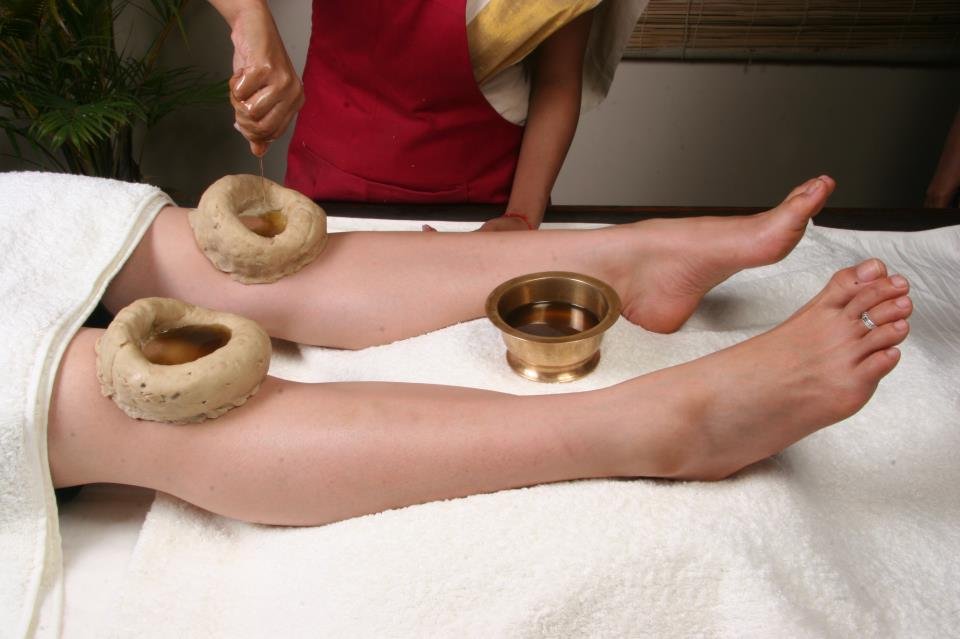
JANU BASTI Panchkarma is a type of local Snigdha Swedana. In Janu Basti, warm medicated oil is poured over the knee joint for a prescribed time. The patient should lie down in a comfortable position exposing the knee joints. The prepared dough mould is fixed on the knee joint in a circular shape. A small amount of black gram paste is also applied inside to avoid any leakage. The oil should be warmed over the hot water and poured slowly inside the mould. The oil is kept at an optimal temperature throughout the procedure. After 30 to 45 minutes the oil will be drained and the mould will be removed. The patient is advised to take rest for some time. This procedure is effective for many knee conditions. Sandhigata Vata, knee injury, iliotibial band syndrome, patella-femoral pain syndrome are few.
Home Remedies for Knee Pain
Let's look at some simple home remedies to get relief from knee pain.
Take a bowl of coconut oil or olive oil. Place it in another bowl of hot water allow this to become warm. Massage the oil when lukewarm onto the affected knee. The massage improves the blood circulation in the region relieving the pain.
Take one glass of warm milk to add one teaspoon of turmeric powder and mix well. Drink this every night to cure joint pain. This drink is also advised to be consumed daily for better immunity and builds your overall health.
Take two teaspoons of roasted and crushed fenugreek seeds also known as methi. Add little water to it, mix it well and make a fine paste. Apply this paste over the affected knee.
Ginger is a very helpful homely remedy. It can be prepared as ginger tea and consumed daily. It can also be made into a paste and applied on knees for a 30-45mins. The antiseptic properties will help in reliving Knee pain.
Ayurvedic Herbs and Oils
One of the best Ayurvedic doctor in Mira bhayandar says " there are many very effective Ayurvedic Herbs and oils that relieve the patient from knee pain on application. They help in greasing the joints, regeneration of nutrient tissues, strengthening the joints ". Some of them are:
Ajwain

Ajwain is rich in anti-inflammatory and anesthetic properties which help in managing knee pain giving a lot of relief to the patient. To use it, you should crush and make a paste of it. Apply the paste on the affected area and rest for some time. Another way is to add a spoon of ajwain in a tub of warm water. Then immerse the affected portion in the water for 15-30 minutes. You can also drink warm water with ajwain.
Dashamool
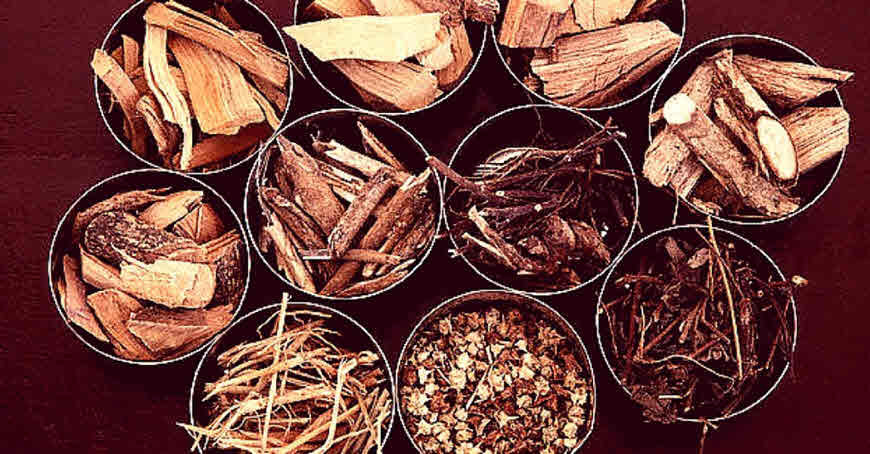
Dashamool as the name implies(Dasha -10, Mool – roots) is a combination of 10 herbs with 10 medical properties. Which include Anti-inflammatory and Anti-arthritic thus making it best for knee pain. This is normally liquid form and is consumed as prescribed. Powder forms are also available which is called Dashamoola Churnam.
Shallaki
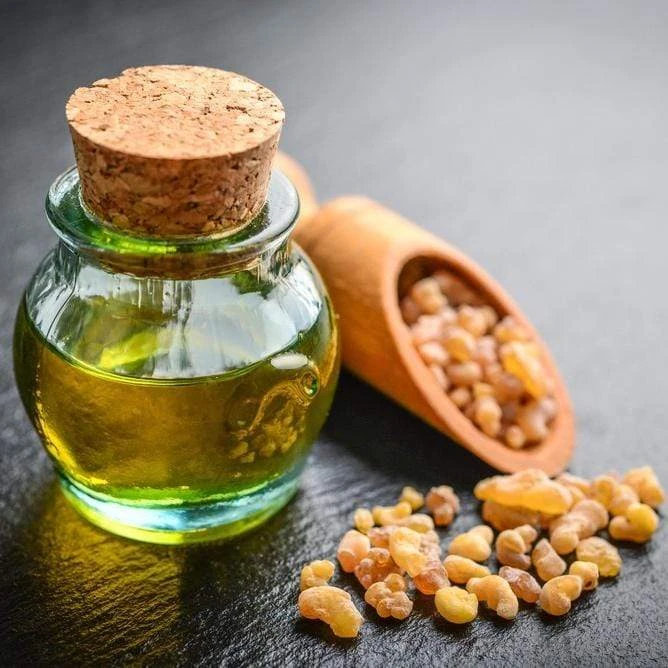
Shallaki- It is known by many names viz. Indian frankincense or Boswellia serrata or Indian olibanum, Salai guggul, and Sallaki in Sanskrit. This can be considered as an Ayurvedic pain killer. It does not only reduce the pain but also reduces the swelling and improves the grease in joints. It is used in essential oil form, which can be massaged around the joint. Also consumed as resin pellets.
Eucalyptus

Eucalyptus oil helps in reducing swelling and inflammatory pain. Its aroma helps to calm the body and regain body strength. Eucalyptus oil is taken from the barks of Eucalyptus trees which are commonly found in the western ghats of India. The oil can be massaged around the Knee to relive the pain.
Diet and Exercise
Diet is an important part of all Ayurvedic treatments. It is essential to consume nutritious food that helps the body to cope up with the treatments administered. A light and warm Ama reducing diet are recommended. Most Ayurvedic doctors suggest to include good spices in meals so to increase the digestion power. The patient is advised to consume Vata pacifying foods – more of sweet, salty and sour foods, less of astringent, bitter, and pungent foods.
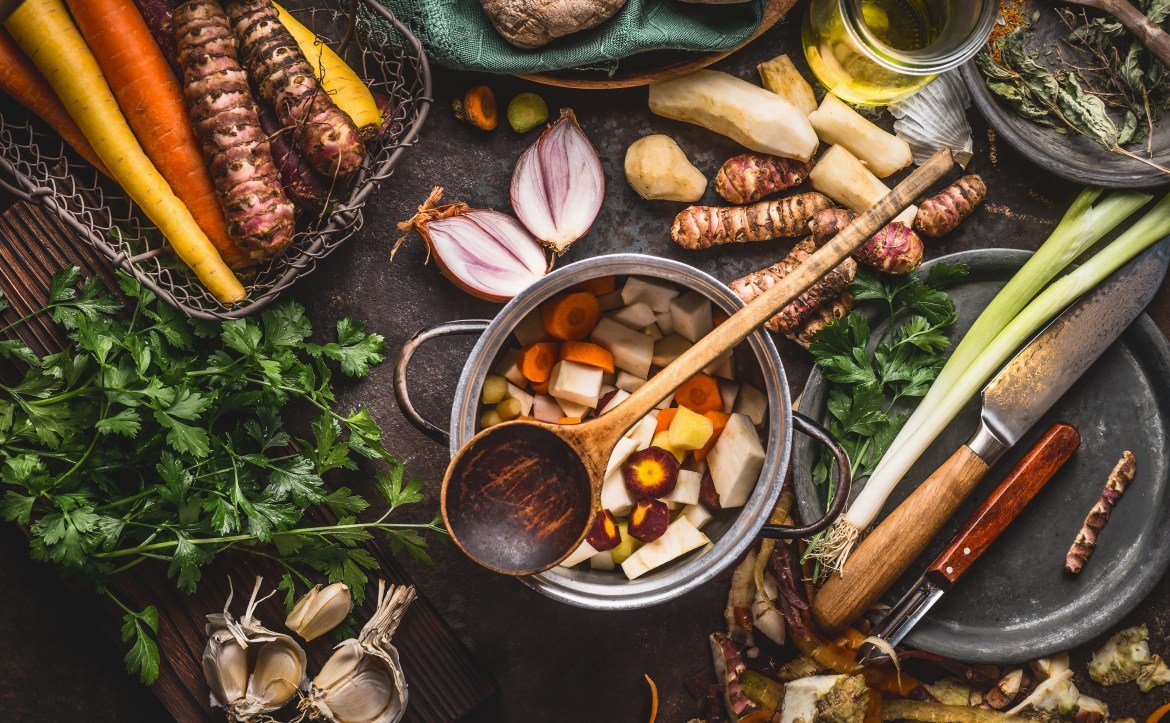
If the prescribed diet is not followed the Ayurveda treatments will not give the full results. This is because food is also considered as medicine in Ayurveda. So, it is not only what to eat but also when to eat. Breakfast should be in the early morning followed by the main meal at noon and dinner before dawn. This may vary a bit according to the severity of the knee paid and specifications of each treatment course.
Exercise is more of a lifestyle in Ayurveda than the muscular movements. There are several yoga practices to be followed for the greasing of knee joints. Which also helps in the regeneration of nutrient cells required for the knee joints. Some of the yoga pose beneficial for knee pain relief are:
- Big Toe Pose – Padangusthasana
- Heron Pose – Krounchasana
- Bound Angle Pose - Baddha Konasana
- Hero Pose – Virasana
- Extended Triangle Pose - Utthita Trikonasana
- Bridge Pose - Setu Bandha
- Easy Pose - Sukhasana
- Extended Side Angle Pose - Utthita Parsvakonasana
- Garland Pose - Malasana
- Half Moon Pose - Ardha Chandrasana
- Extended Hand-To-Big-Toe Pose - Utthita Hasta Padangustasana
- Half Frog Pose - Ardha Bhekasana
- Lion Pose - Simhasana
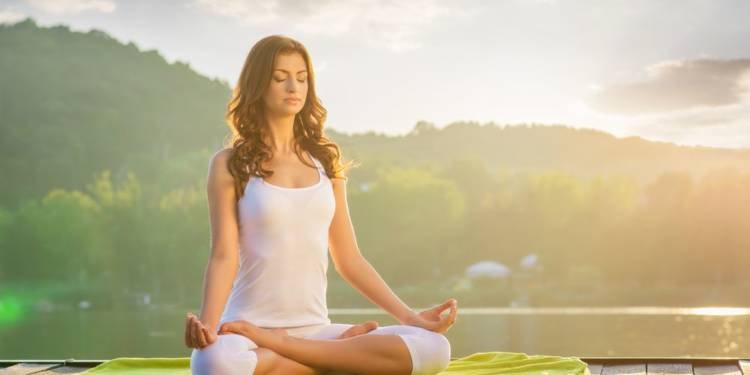
Some special rotation exercises are also recommended depending upon the treatment methods. There are also cases when the patient is advised to limit the motion of the knee. Usually when the knee condition is Sevier. Also if strong medication is going on, then the knee needs more rest.
Meditation is also recommended during Ayurvedic treatment. as it calms and balances the mind enabling the medicine to work and treat the knee pain in the patient.


